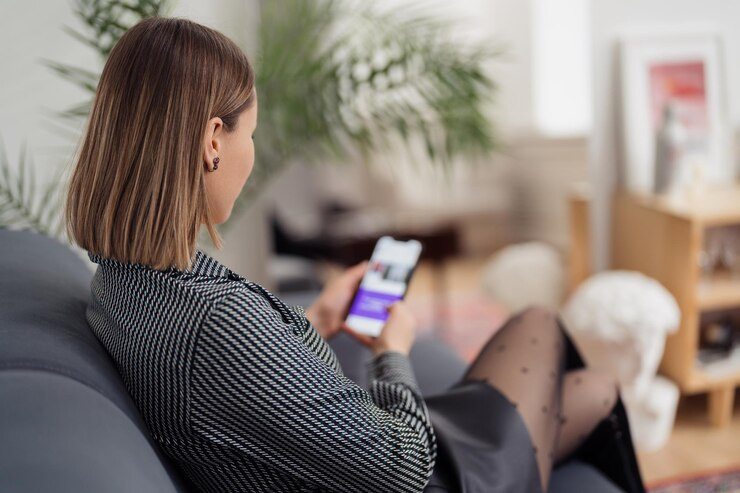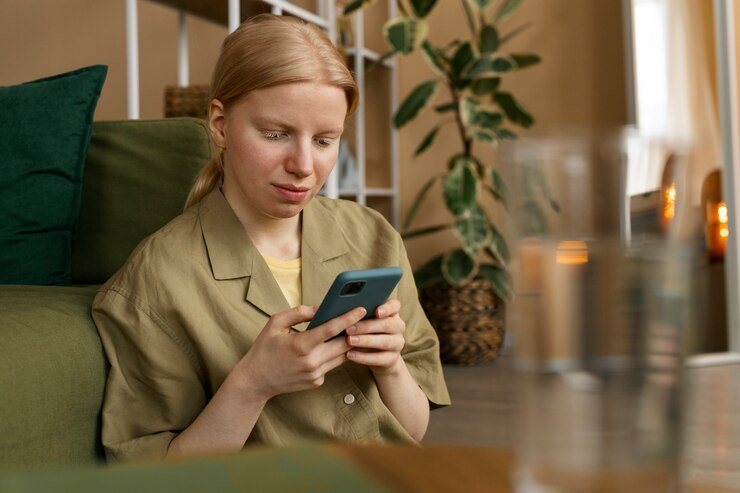In our hyper-connected world, safeguarding mental health is no longer a privilege, but a crucial element of self-care. While traditional therapy remains a cornerstone of mental well-being, technology offers a wealth of tools that can seamlessly integrate into your mental health journey. This blog explores a comprehensive tech toolbox for your mind, featuring apps, websites, and tech hacks designed to empower you in managing stress, and anxiety, and cultivating overall mental wellness.
Calming Your Mind:
Apps and Websites for Relaxation and Stress Management
Meditation Apps: Mindfulness meditation has been scientifically proven to reduce stress and improve focus. Apps like Headspace (https://www.headspace.com/) and Calm (https://www.calm.com/) offer guided meditations tailored for beginners and experienced practitioners alike.
Deep Breathing Exercises: Taking slow, controlled breaths activates the parasympathetic nervous system, promoting relaxation. Apps like Breathe (https://apps.apple.com/us/app/breathe/id1459455352) and Simple Habit (https://apps.apple.com/us/app/simple-habit-tracker/id1132999120) provide guided breathing exercises to help you unwind and de-stress.
Nature Sounds and Calming Music: Immersing yourself in nature sounds or calming music can significantly reduce anxiety and promote sleep. Websites like MyNoise (https://mynoise.net/) and Rainy Mood (https://rainymood.com/) offer a variety of customizable soundscapes to suit your preferences.
Adult Coloring Apps: Coloring within designated lines might seem like a childish activity, but adult coloring apps like Mandala Coloring Book (https://play.google.com/store/apps/dev?id=4689418369691700498&hl=en&gl=US) and Recolor (https://recolor.com/) have gained immense popularity for their stress-relieving properties. The repetitive motions and focus required for coloring can induce a state of mindfulness, promoting relaxation and emotional regulation.
Combating Anxiety: Tools and Resources to Manage Worry and Fear
CBT (Cognitive Behavioral Therapy) Apps: Cognitive behavioral therapy (CBT) is a well-established therapeutic approach for managing anxiety disorders. Apps like MoodTools (https://moodtools.org/) and Pacifica incorporate CBT principles to help you identify negative thought patterns and develop coping mechanisms to manage anxiety.
Exposure Therapy Apps: Exposure therapy involves gradually confronting your fears in a safe and controlled environment. Apps like NOCD (https://www.treatmyocd.com/) and Woebot (https://woebothealth.com/) utilize exposure therapy techniques to help users manage anxiety disorders like phobias and obsessive-compulsive disorder (OCD).
Anxiety Hotlines and Support Groups: During moments of intense anxiety, connecting with a supportive community or professional can be immensely helpful. Websites like the Anxiety and Depression Association of America (ADAA) (https://adaa.org/) provide a national anxiety hotline number and information on local support groups.
Enhancing Overall Mental Wellbeing: Apps and Websites to Foster Growth and Positive Psychology

Gratitude Apps: Cultivating an attitude of gratitude has been linked to increased happiness and overall well-being. Apps like Gratitude Journal (https://apps.apple.com/us/app/gratitude-journal-prompts/id1372575227) and Happier (https://www.tenpercent.com/) prompt you to reflect on the positive aspects of your life, fostering a sense of appreciation and contentment.
Journaling Apps: Journaling allows you to express your thoughts and emotions freely, promoting self-awareness and emotional processing. Apps like Daylio (https://daylio.net/) and Journey (https://play.google.com/store/apps/details?id=com.journey.app&hl=en&gl=US) offer various features to enhance your journaling experience.
Positive Psychology Resources: Positive psychology focuses on building strengths and fostering well-being. Websites like The Greater Good Science Center at UC Berkeley (https://greatergood.berkeley.edu/) offer articles, exercises, and resources based on positive psychology principles to help you flourish.
Tech Hacks for Mental Wellness: Simple Strategies to Leverage Technology
Limit Social Media:
Social media can be a double-edged sword. While it allows us to connect with loved ones and stay informed, it can also be a breeding ground for comparison and envy. The carefully curated feeds showcasing other people’s highlight reels can distort reality and negatively impact our self-esteem and mood.
Here are some actionable steps to take control of your social media experience:
Track Your Usage: Most smartphones offer built-in app usage tracking features. Utilize these tools to gain awareness of how much time you spend on social media platforms. Aiming to reduce your daily usage by 30 minutes can make a significant difference.
Schedule Social Media Breaks: Treat social media like a TV show or video game. Designate specific times to check these platforms, say during your lunch break or after dinner. Avoid mindless scrolling throughout the day.
Unfollow Negativity: Audit your social media accounts and unfollow people or groups that consistently post negative content or make you feel inadequate. Surround yourself with positive and inspiring online communities that uplift and motivate you.
Mute Notifications: The constant barrage of notifications from social media apps can be distracting and contribute to feelings of anxiety. Consider muting notifications altogether or customizing them to receive alerts only for important messages or updates.
Curate Your News Feed:
A steady diet of negative news can elevate stress levels and cultivate a sense of helplessness. Here’s how to curate your news feed for a more positive and balanced information intake:
Follow Credible Sources: Stick to reputable news organizations known for fact-checking and unbiased reporting. Avoid sensationalized news sources that prioritize drama over informative content.
Personalize Your Feed: Many news websites and social media platforms allow users to personalize their feeds based on interests. Choose topics that align with your values and aspirations, such as science, technology, or personal development.
Limit News Consumption Times: Schedule specific times to check the news, perhaps once in the morning and once in the evening. Avoid doom-scrolling late at night, as negative news can disrupt sleep patterns.
Balance with Uplifting Content: Complement your news intake with positive and inspiring content. Subscribe to social media channels or newsletters that focus on heartwarming stories, acts of kindness, or creative endeavors.
Create a Sleep Sanctuary:
The blue light emitted from electronic devices, particularly smartphones and laptops, disrupts the production of melatonin, a hormone essential for regulating sleep-wake cycles. Here’s how to create a sleep sanctuary that promotes better sleep:
Power Down Before Bed: Set a specific time, ideally at least an hour before bedtime, to power down all electronic devices. Engage in calming activities like reading, taking a warm bath, or light stretching instead.
Night Mode Settings: Many devices offer built-in night mode settings that adjust the screen color to emit a warmer tone, reducing blue light exposure. Utilize these settings to create a more sleep-conducive environment.
Invest in Blue Light-Blocking Glasses: Consider wearing blue light-blocking glasses, particularly if you find yourself using electronic devices close to bedtime. These glasses can further reduce blue light exposure and promote better sleep quality.
Optimize Your Sleep Environment: Ensure your bedroom is dark, quiet, and cool for optimal sleep. Invest in blackout curtains, an earplug set, and a comfortable mattress to create a sleep-promoting environment.
Mindfulness in Daily Activities:
Mindfulness is the practice of paying attention to the present moment without judgment. Here’s how to integrate short mindfulness exercises into your daily routine:
The 5-4-3-2-1 Technique: During moments of stress or anxiety, take a few deep breaths and focus on your senses. Name 5 things you see, 4 things you can touch, 3 things you hear, 2 things you smell, and 1 thing you taste. This simple practice can help ground you in the present moment and alleviate anxiety.
Mindful Commuting: Commuting can be a stressful experience. Use your commute time for a short mindfulness practice. Focus on your breath, the rhythm of your walk, or the sounds around you. You can also use guided mindfulness meditation apps like Calm or Headspace for on-the-go exercises.
The Mindful Dishwashing Technique: Even mundane tasks can be opportunities for mindfulness. While washing dishes, focus on the sensation of warm water on your hands, the sound of the water running, and the feeling of the dishes becoming clean. This practice can help reduce autopilot thinking and cultivate a sense of calm during everyday chores.
Connect with Loved Ones:
Social connection is a fundamental human need and plays a crucial role in maintaining mental well-being. Here’s how to leverage technology to stay connected with loved ones:
Schedule Regular Video Calls: Set aside specific times for video calls with friends and family. Seeing a loved one’s face can significantly boost your mood and combat feelings of isolation.
Create a Group Chat: Create a group chat with close friends or family to share updates, and funny stories, or simply provide a platform for daily check-ins.
Send a Thoughtful Text: A quick message expressing gratitude or well wishes can make a big difference. A thoughtful message can brighten someone’s day and strengthen your social connections.
Utilize Social Media for Good: While social media can be detrimental in excess, utilize these platforms positively. Share uplifting content with loved ones, join online communities that share your interests, or participate in virtual events and activities.
Develop a Tech-Free Routine:
Constant connectivity can be overwhelming and contribute to feelings of anxiety and stress. Schedule dedicated times to completely disconnect from technology:
Digital Detox Weekends: Consider dedicating weekends or specific evenings to a complete digital detox. Power down your devices, silence notifications, and engage in activities that don’t involve technology, like reading, spending time with loved ones, or pursuing hobbies.
Tech-Free Zones: Designate specific areas in your home, like your bedroom or dining table, as tech-free zones. This encourages mindful presence and promotes uninterrupted conversations during meals or relaxation time.
Silence Notifications: Turn off notifications on your phone and consider setting specific times (perhaps during work hours) to check emails or social media. This reduces the constant urge to check your phone and promotes deeper focus on the task at hand.
Embrace Boredom: While the urge may be to reach for your phone whenever you have a spare moment, embrace boredom. Allow yourself time to disconnect, daydream, or be present in the moment. This can foster creativity and provide mental space for relaxation.
Remember: Technology as a Tool, Not a Replacement
The apps, websites, and tech hacks mentioned here are valuable tools to enhance mental well-being. However, it’s important to remember that technology should not replace professional help. If you are struggling with persistent anxiety, depression, or other mental health concerns, seeking professional therapy is vital.
Conclusion: Building a Sustainable Mental Wellness Routine
Technology offers a wealth of resources to empower you on your mental health journey. By incorporating the tools and techniques mentioned above into your daily routine, you can cultivate a sense of calm, manage stress and anxiety, and foster overall mental well-being. Remember, technology is most effective when used in conjunction with healthy lifestyle choices, such as regular exercise, a balanced diet, and getting enough sleep. With dedication and self-compassion, you can leverage the tech toolbox at your disposal to build a sustainable mental wellness routine and create a happier, healthier you.


